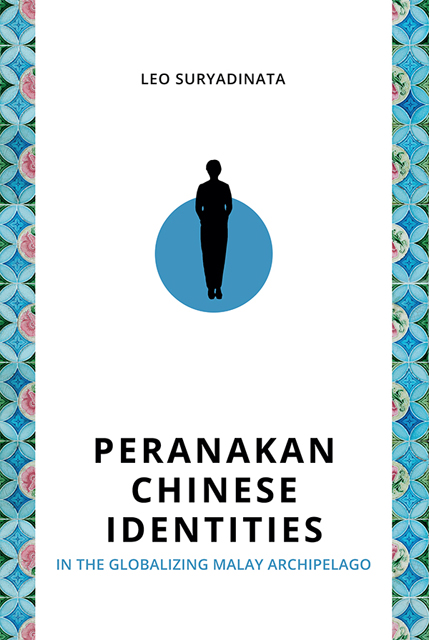Book contents
- Frontmatter
- Contents
- Preface
- Acknowledgements
- Part I Regional Dimensions: Indonesia, Malaysia and Singapore (IMS)
- Part II Focusing on Indonesia
- Appendix 1 The Prospects of the Peranakan Community at the Age of Globalization, by Tan Ta Sen
- Appendix 2 Some Books on the Peranakan Chinese Published between 2007 and 2021
- Bibliography
- Index
- About the Author
7 - Innovation and Transformation: Peranakan Chinese Literatures/Publications in IMS
Published online by Cambridge University Press: 01 September 2023
- Frontmatter
- Contents
- Preface
- Acknowledgements
- Part I Regional Dimensions: Indonesia, Malaysia and Singapore (IMS)
- Part II Focusing on Indonesia
- Appendix 1 The Prospects of the Peranakan Community at the Age of Globalization, by Tan Ta Sen
- Appendix 2 Some Books on the Peranakan Chinese Published between 2007 and 2021
- Bibliography
- Index
- About the Author
Summary
Introduction
Since the last decades, there has been a resurgence of interest in Peranakan Chinese culture in Singapore, Malaysia and Indonesia as witnessed by the opening of a Peranakan museum and the making of a popular TV series “Little Nyonya” (xiao niang re 小娘惹), both in Singapore; the republication of pre-war Peranakan literature, the exhibition of Peranakan furniture, and the publication of a Peranakan pictorial book, all in Jakarta, the establishment of the Benteng Heritage Museum in Banten, West Java; and seminars on Peranakan Chinese and the renovation of Peranakan houses in Malacca, Malaysia. Although the resurgence is still rather weak, yet it has been noticeable.
This chapter examines the Peranakan Chinese culture with special reference to their literature in the above three countries, their developments, their similarities and differences, and their future development. By Peranakan Chinese literature, I mean the literature in Malay/Indonesian or Dutch/English produced by the Peranakan Chinese. It should be noted that this chapter does not mean to be comprehensive; rather, it aims to present the subject matter in a comparative perspective. Through a comparative study, we will be able to see different factors and conditions which result in the development of different literatures. I am fully aware that the topic is broad and complex, therefore I would like to treat this chapter as a preliminary survey rather than an in-depth study.
Publications in Peranakan Malay: Pre-Independence
The Peranakan Chinese elite in colonial IMS were either Dutch-educated or English-educated, but Peranakan Malay was used as the medium of communication with the Peranakan masses. It is not surprising that in IMS, Peranakan publications are divided into Malay and Dutch/English versions and those in Malay are the largest in number. Some publications use two languages (i.e. Malay and Dutch, or Malay and English), but the Malay portion is often larger than the foreign language section.
Let us look at the publications in colonial Indonesia (known as Dutch East Indies) and British Malaya and Singapore.
Colonial Indonesia
Towards the end of the nineteenth century, with the rise of Chinese cultural nationalism in Southeast Asia, especially in Indonesia, the Peranakan began to translate Chinese popular stories into the language that they are familiar with: Malay.
- Type
- Chapter
- Information
- Publisher: ISEAS–Yusof Ishak InstituteFirst published in: 2023



